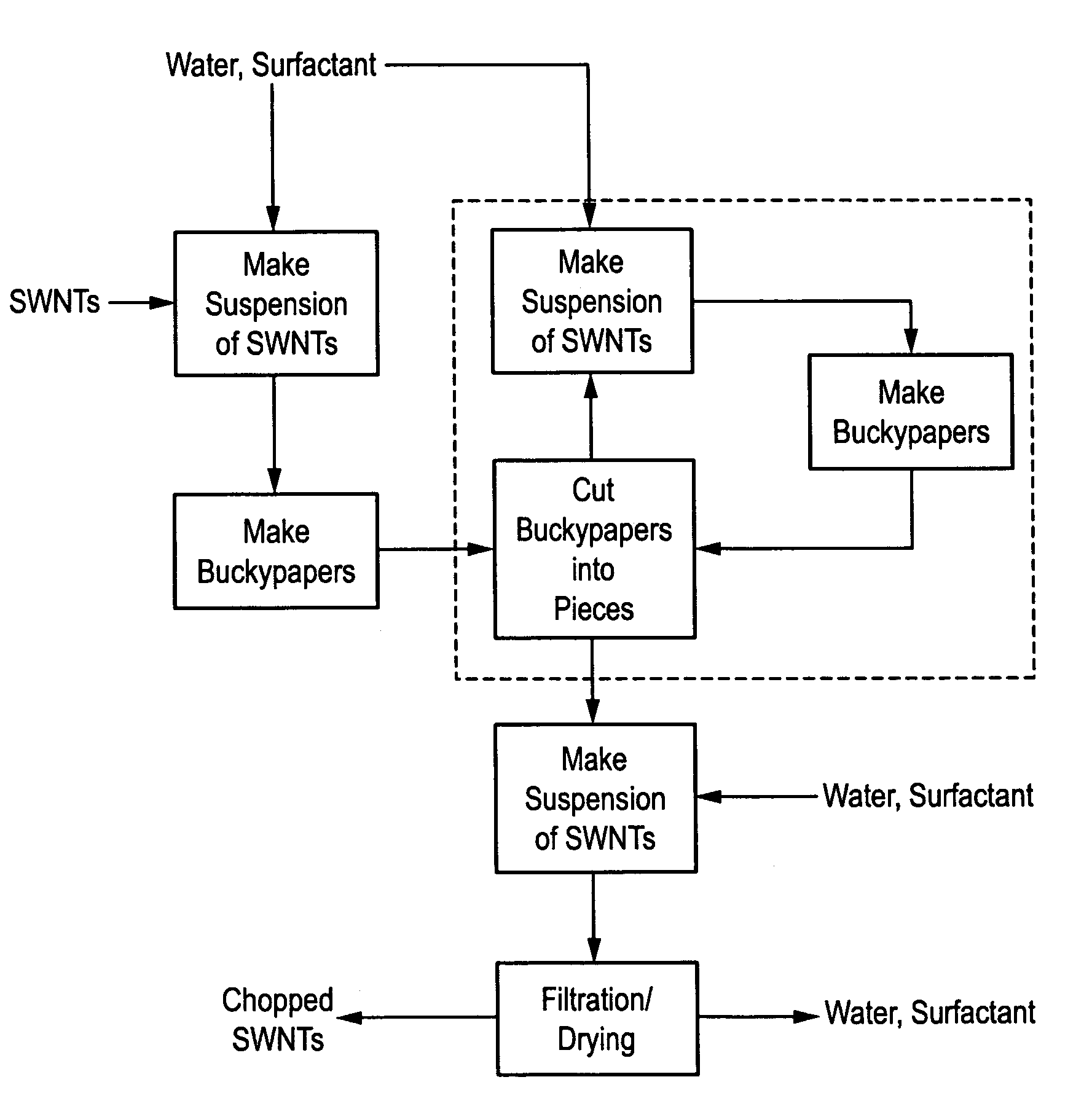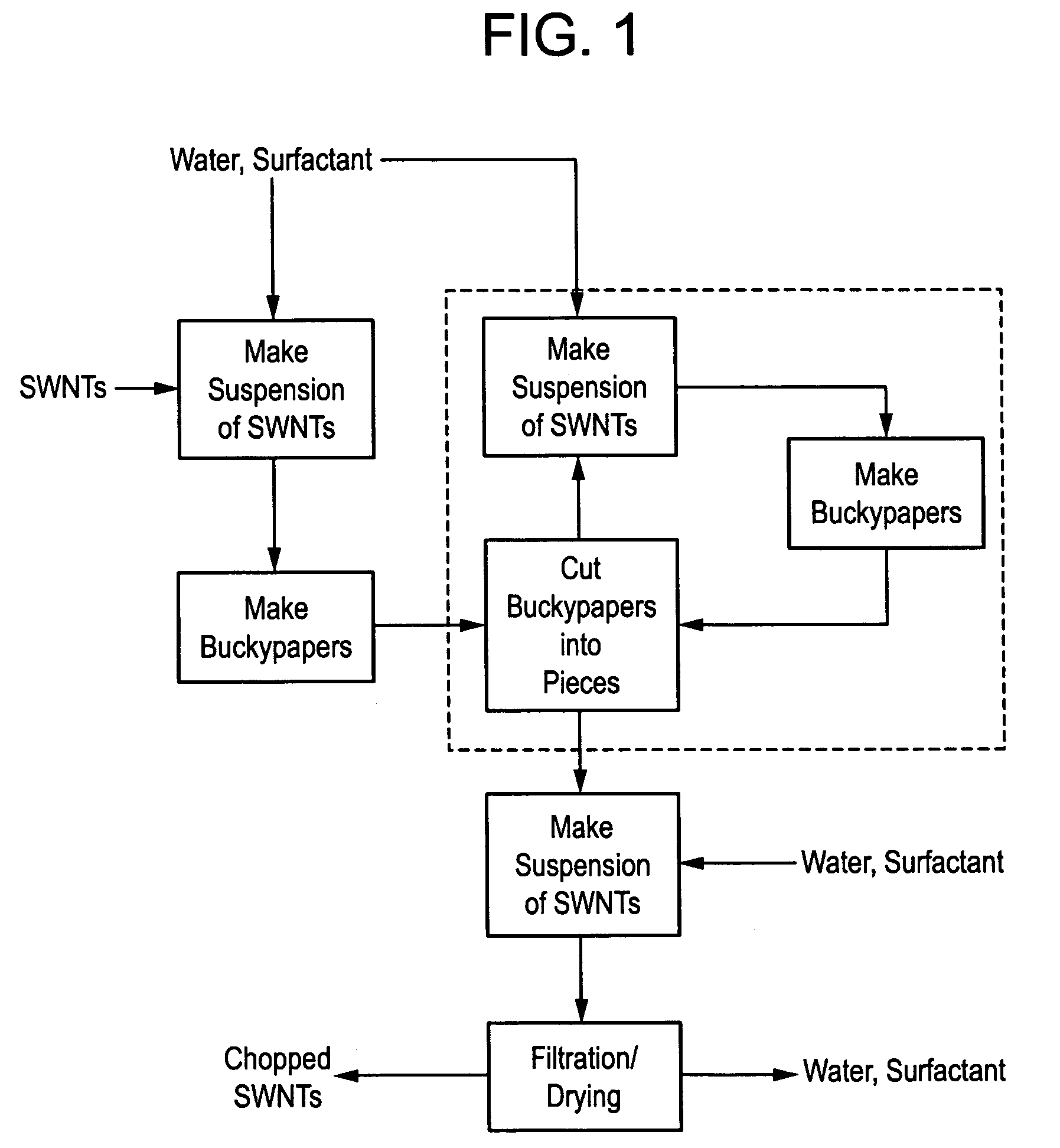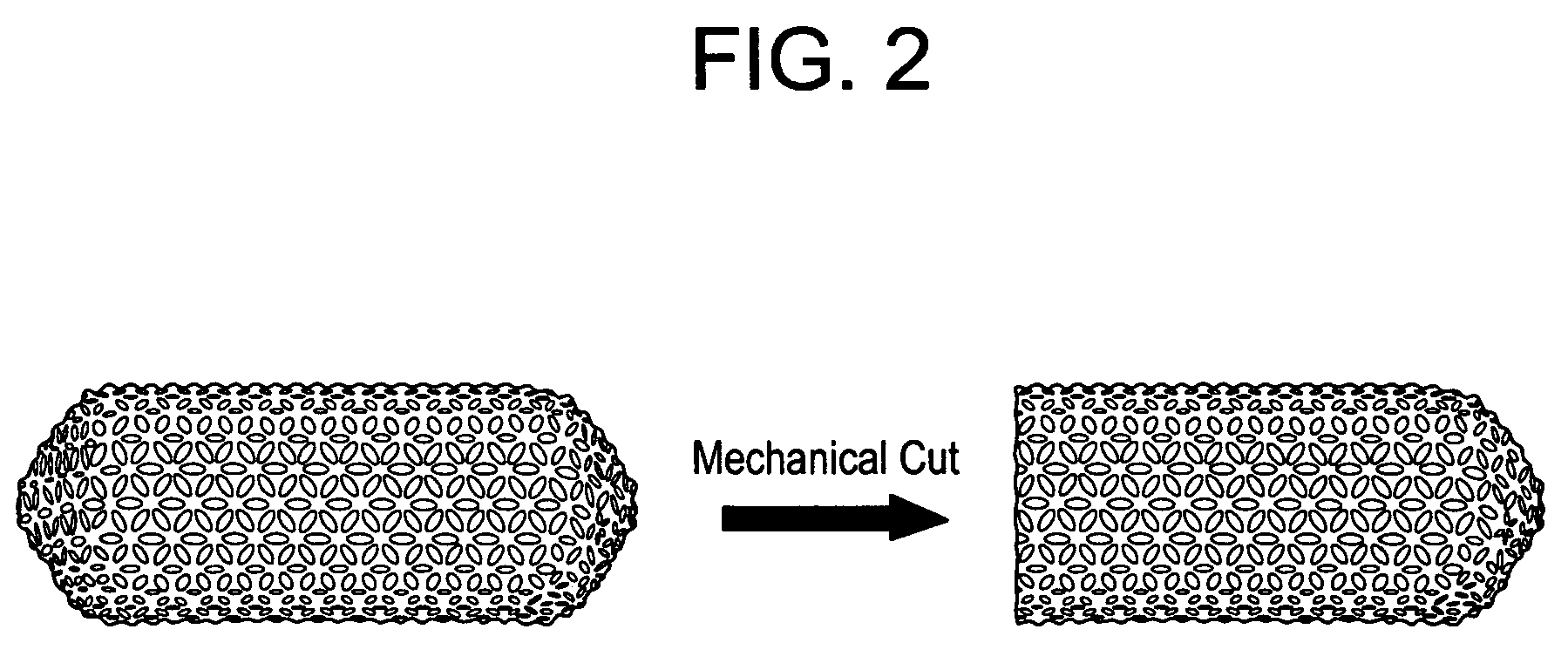Method for mechanically chopping carbon nanotube and nanoscale fibrous materials
a carbon nanotube and nanofiber technology, applied in the field of carbon nanotubes and nanofibers, can solve the problems of nanotube dispersion and tube-to-tube sliding under tension, poor interfacial other problems, to achieve the effect of improving the bonding between the swnt and the matrix, and improving the bonding strength
- Summary
- Abstract
- Description
- Claims
- Application Information
AI Technical Summary
Benefits of technology
Problems solved by technology
Method used
Image
Examples
example 1
Mechanical Chopping of Nanotubes
[0054]BuckyPearls™ (Carbon Nanotechnologies Inc.), a highly purified SWNT, were suspended in water with surfactant at a surfactant to SWNT weight ratio of 10:1. Sonication was used to make a uniform suspension, which was then subjected to a filtration process to make buckypapers. The circular buckypapers were roughly 10 to 40 μm thick with diameters of 90 mm, 47, mm, or 25 mm, and composed of uniformly dispersed nanotubes (usually in rope form). The several layers of the buckypapers were stacked together and then manually chopped to fine powders (less than 0.5 mm size) by using a conventional sharp single edge blade, and the resultant powders were used to again make an aqueous dispersion from which buckypapers again were made. This process of chopping and reforming buckypapers was repeated for eight cycles.
[0055]The diameter and length of the pristine and chopped nanotubes were analyzed. SEM and AFM results showed that the mechanical cutting effective...
example 2
Microtome Chopping of Aligned Nanotube Buckypapers
[0056]More precise cutting of nanotubes was also conducted by using a Leica Ultramicrotome UC6 / FC6 machine and magnetically aligned SWNT buckypapers frozen in water. The aligned buckypaper was fabricated using a 17.3 Tesla magnet. Ten to thirty small strips (5 mm in width and 30 mm in length) of the aligned buckypaper were wetted with water and then tightly stacked together in an identical SWNT alignment direction, and then frozen to prepare a solid cutting sample for the microtome. The microtome was then used to chop (50 nm and 100 nm) the frozen aligned buckypaper laminate using a sharp diamond knife at a temperature between about −20 and −40° C. The cutting direction was perpendicular to the SWNT alignment direction in the sample to achieve more precise length control, compared to using randomly oriented SWNT buckypapers. FIG. 8 shows that the length distribution changes before and after cutting, clearly indicating this method can...
example 3
Functionalization of Mechanically Chopped Nanotubes
[0057]The chopped nanotubes from Example 1 were subjected to gentle oxidation following five cutting cycles, by adding the chopped SWNTs in mixed acid solution (H2SO4:HNO3=1:3) and stirred for 150 minutes placed in a bath sonication for 10 minutes. AFM images showed that the most oxidized tubes attracted dispersion surfactant at their ends and formed a “dog-bone” shape that was not observed before the oxidation. This indicates the forming of oxygen-containing functional groups at the ends of the chopped nanotubes.
PUM
| Property | Measurement | Unit |
|---|---|---|
| elastic modulus | aaaaa | aaaaa |
| elastic modulus | aaaaa | aaaaa |
| length | aaaaa | aaaaa |
Abstract
Description
Claims
Application Information
 Login to View More
Login to View More - R&D
- Intellectual Property
- Life Sciences
- Materials
- Tech Scout
- Unparalleled Data Quality
- Higher Quality Content
- 60% Fewer Hallucinations
Browse by: Latest US Patents, China's latest patents, Technical Efficacy Thesaurus, Application Domain, Technology Topic, Popular Technical Reports.
© 2025 PatSnap. All rights reserved.Legal|Privacy policy|Modern Slavery Act Transparency Statement|Sitemap|About US| Contact US: help@patsnap.com



